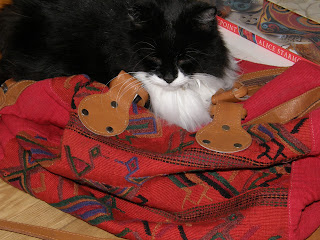Step-by-Step Successful Stitching Every Time
Tip 1: Choose the pattern carefully
There is nothing worse than spending hours stitching something to find that you dislike the result. If you have doubts about a pattern or a colour scheme - don't be afraid to make changes!
Go with your gut!
The chances are that if you have doubts going in, you won't like the end result.
Tip 2: Choose the right material
You've chosen the pattern and accepted (or tweaked the colour scheme to your liking). How do you choose the right material?
Consider what are you making and your ability level. Are you going to sew on paper, plastic, aida, linen or other? Which do you prefer? What does the designer recommend? What 'look' are you after?
Many cross stitch books helpfully show the same pattern on linen and aida, making the choice much easier.
If you are trying a fabric for the first time, choose a small design!
Tip 3: Make sure you have enough fabric
Make sure that the pattern fits comfortably on your fabric - don't forget to leave enough fabric around the pattern to permit edging and finishing.
There are free apps out there that do all of the hard work for you. Simply enter the fabric count (holes per inch) and the number of stitches required (most patterns will tell you the number of stitches required) and the app will calculate the amount of fabric you need for the pattern.
Tip 4: Position the pattern on the material
The easiest way to position the pattern on the fabric is to find the centre of the pattern and the centre of the fabric.
Most patterns mark the centre of the pattern so that you can easily count out from the middle to the end of the stitching. Look for a little arrow or a triangle shown in the border or within the first row of the pattern at the top or bottom and the sides.
The easiest way to find the centre of the fabric, unless you are using paper, is to fold the material in half and then into quarters. Finger press the folds and then when you unfold the material you'll see the centre.
Using the centre of the fabric and the centre of the pattern count out the number of stitches in each direction. This is really easy if you are using Aida because each square is equivalent to one stitch. It is a little harder with linens and other fabrics. I'll share some tricks in a later post.
Count once, insert counting pin to mark the last stitch in the pattern in all directions. Then, count again!
A counting pin is a blunt pin decorated with beads that is held in place with a little plug in the same way as some ear rings. If you don't have counting pins, use safety pins. Normal pins are likely to slip out.
Tip 5: Avoid fraying edges
Stop the edges of linen and aida from fraying by machine stitching around the edge or blanket stitching by hand. It is a bit of a chore but it ensures a good strong edge that can withstand handling and washing.
I prefer to hand stitch using a cotton that is the same colour as the fabric. On high count fabrics I blanket stitch over two squares rather than one. It is almost invisible when done and well worth the effort.
Tip 6: Organise your thread
Make sure that you have the coloured threads that you need and the right size needle.
Get your threads organised and ready on numbered bobbins or a thread organiser. This is especially important if you are using a number of similar shades or creating colours by mixing different coloured threads together.
It is really easy to pick up the wrong coloured thread when you are working with similar shades in artificial light. You may not spot an error until the morning. Such errors are really frustrating. They also waste precious stitching time and costly silks.
You can buy thread organisers in all materials, shapes and sizes or you can make them.
One of the easiest and quickest ways to make a thread organiser is to take a strip of card and make holes in the card. Make one hole for each colour. Put the thread through the hole and draw the symbol that the pattern uses for the colour next to the hole. Errors are now much less likely!
Tip 7: Enjoy your stitching.
Start stitching in the centre and work outwards.
Don't start your sewing with a knot. Master the loop start. See earlier Step-by-Step post on keeping the back of your sewing neat for instructions on how to do this.
Stitching is good for the soul.
It should be relaxing and it can be really therapeutic at the end of a difficult day.
The moment that you begin to make more errors than correct stitches or you find yourself getting annoyed with threads that keep tangling, take a break.
Enjoy your stitching. Don't make it into a chore!































